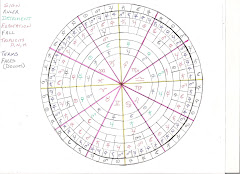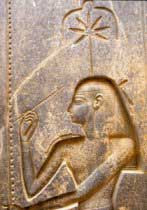The luminaries were what traditional astrologers called the two astrological "planets" which were the brightest and most important objects in the heavens, that is,
* the Sun and
* the Moon
The Sun and Moon were considered the rulers of two groups of the other planets, in accordance with the doctrine of astrology of sect: diurnal (or daytime) planets, which were ruled by the Sun, and nocturnal (or nighttime) planets, which were ruled by the Moon.
The Sun was also the sect ruler—or the luminary of sect for all charts of events and individuals born in the daytime, when the Sun was over the horizon; and the Moon was the sect ruler or luminary of sect for night charts, when the Sun was below the horizon.
Ancient astrologers divided all astrological factors into day and night groups: essential dignities, Arabian Parts (or "Lots") and all planetary characteristics. Even each of the Starry planets themselves "belonged" to one luminary or the other. The luminary "in charge" of any given chart was called the luminary of sect.
Seven of Cups
14 years ago



No comments:
Post a Comment